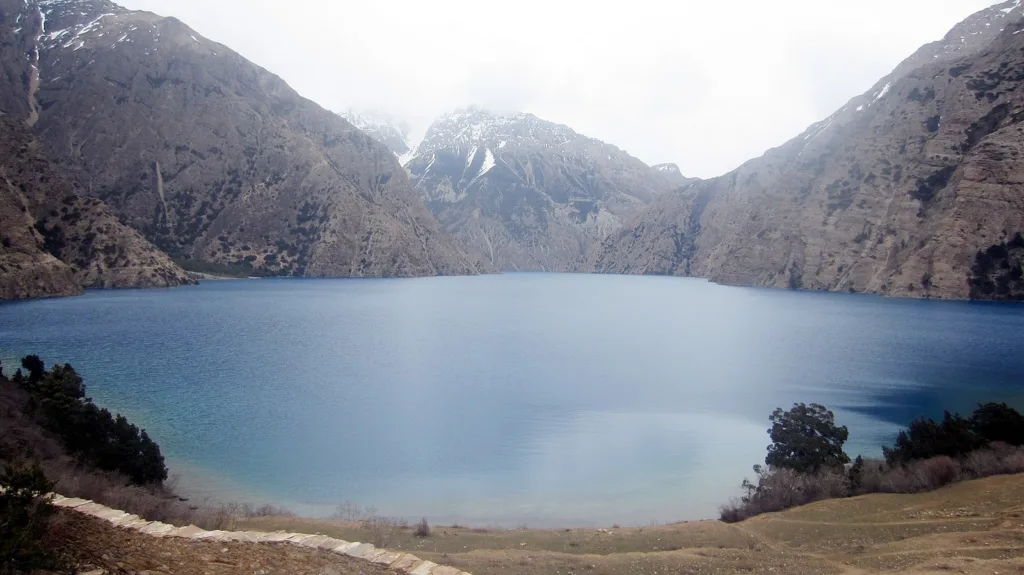Oligotrophic tarns are small, high-altitude lakes that are characterized by a lack of nutrients. These lakes are typically found in mountainous regions and are formed by glacial activity. Due to their remote location and lack of human activity, oligotrophic tarns are often some of the most pristine and untouched bodies of water in the world.
One of the defining features of oligotrophic tarns is their clear, deep waters. With little nutrient input, the water in these lakes is often crystal clear, allowing for excellent visibility. This clarity also means that sunlight can penetrate deeper into the water column, which can support a unique ecosystem of aquatic plants and animals.
Despite their lack of nutrients, oligotrophic tarns can still support a diverse array of life. Fish species such as trout and char are often found in these lakes, and their populations can be surprisingly large gven the limited food sources available. These fish are often highly sought-after by anglers due to their large size and challenging nature.
In addition to supporting fish populations, oligotrophic tarns also play an important role in the broader ecosystem. They serve as a source of drinking water for wildlife and humans alike, and they can act as a refuge for endangered species that are threatened by human activity in other parts of the world.
Despite their many benefits, oligotrophic tarns are also vulnerable to a range of threats. Climate change, for example, can alter the water cycle and reduce the amount of water available to these lakes. Human activity, such as mining or logging, can also disrupt the delicate balance of nutrients that allows these ecosystems to thrive.
Oligotrophic tarns are a unique and valuable part of the natural world. Their clear waters and diverse ecosystems make them a fascinating subject of study, and their importance to the broader ecosystem cannot be overstated. While they are vulnerable to a range of threats, it is our responsibility to protect and preserve these lakes for future generations.
What Does Oligotrophic Tarn Mean?
An oligotrophic tarn is a type of lake or water body that has a deficiency of plant nutrients, such as phosphorus and nitrogen, and is usually accompanied by an abundance of dissolved oxygen. This type of water body is often clear and deep, with a low level of productivity due to the limited availability of nutrients for plants and algae. Oligotrophic tarns are typically found in regions with cold climates, high elevations, and rocky terrain, where nutrient inputs are low and water turnover is slow. These water bodies are important habitats for cold-water fish species and othr aquatic organisms that are adapted to low-nutrient environments.

Is An Oligotrophic Lake Healthy?
An oligotrophic lake is considered healthy in terms of its natural state. These lakes are characterized by their clear and deep waters, free of weeds or large algae blooms. This indicates that the water is low in nutrients, which is a natural condition for oligotrophic lakes.
However, the low nutrient levels also mean that the lake does not support large populations of fish or othr aquatic life that require high nutrient levels to thrive. Despite this, oligotrophic lakes can sustain a food chain that can support a desirable fishery of large game fish.
An oligotrophic lake is healthy in terms of its natural state and can support a good fishery. However, it may not be suitable for sustaining large populations of other aquatic life that require higher nutrient levels.
What Are Oligotrophic Waters?
Oligotrophic waters are bodies of water, typically lakes, that are characterized by low nutrient levels. These waters are usually very clear, deep, and cold, with a firm, sandy substrate. Due to the low nutrient levels, the populations of aquatic plants, animals, and algae are generally low. The fish that can be found in these waters are often low in abundance, but large in size. oligotrophic waters are nutrient-poor environments that support a limited number of aquatic species.
What Causes An Oligotrophic Lake?
An oligotrophic lake is a type of lake that has low nutrient levels and low productivity. These lakes are typically formed in areas with uneven land surfaces and depressions created by geological events such as glaciation. The landscapes surrounding these lakes are often infertile, whch contributes to the low nutrient levels. As a result, oligotrophic lakes have low levels of plant and animal life compared to eutrophic lakes. The main factors that contribute to the oligotrophic nature of these lakes include low nutrient levels, low levels of organic matter, and high oxygen levels. oligotrophic lakes are created by geological events that create depressions in infertile landscapes, leading to low nutrient levels and low levels of plant and animal life.

Conclusion
Oligotrophic tarns are pristine bodies of water that are characterized by teir low nutrient levels and high oxygen content. These lakes are typically clear, deep, and cold, making them perfect habitats for large game fish. Although they do not support large populations of aquatic plants, animals, or algae, the food chain in oligotrophic tarns is capable of sustaining a very desirable fishery. Geological events such as glaciation have contributed to the formation of these lakes in uneven land surfaces and depressions. Oligotrophic tarns are therefore a valuable and unique ecosystem that should be preserved and protected for future generations to enjoy.
